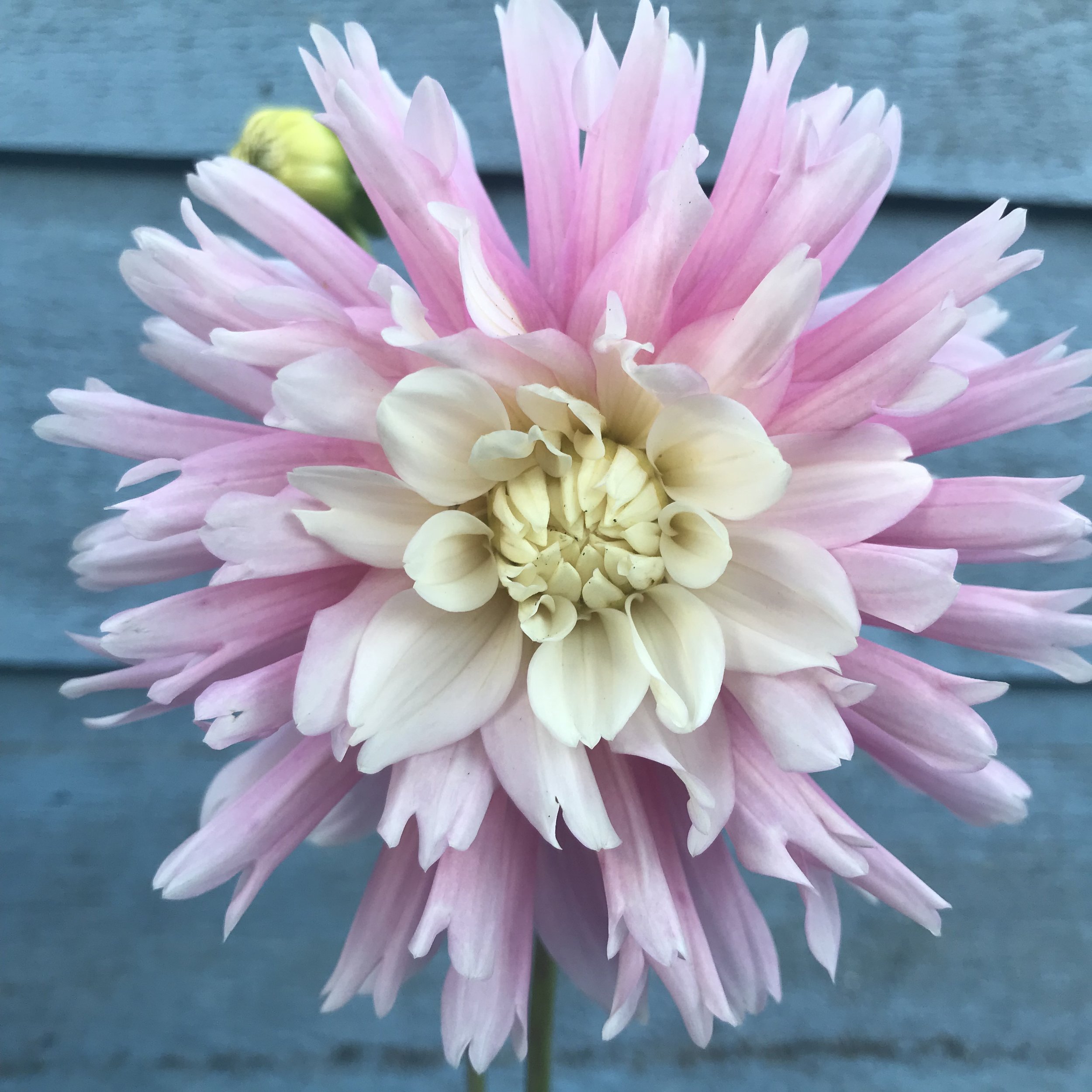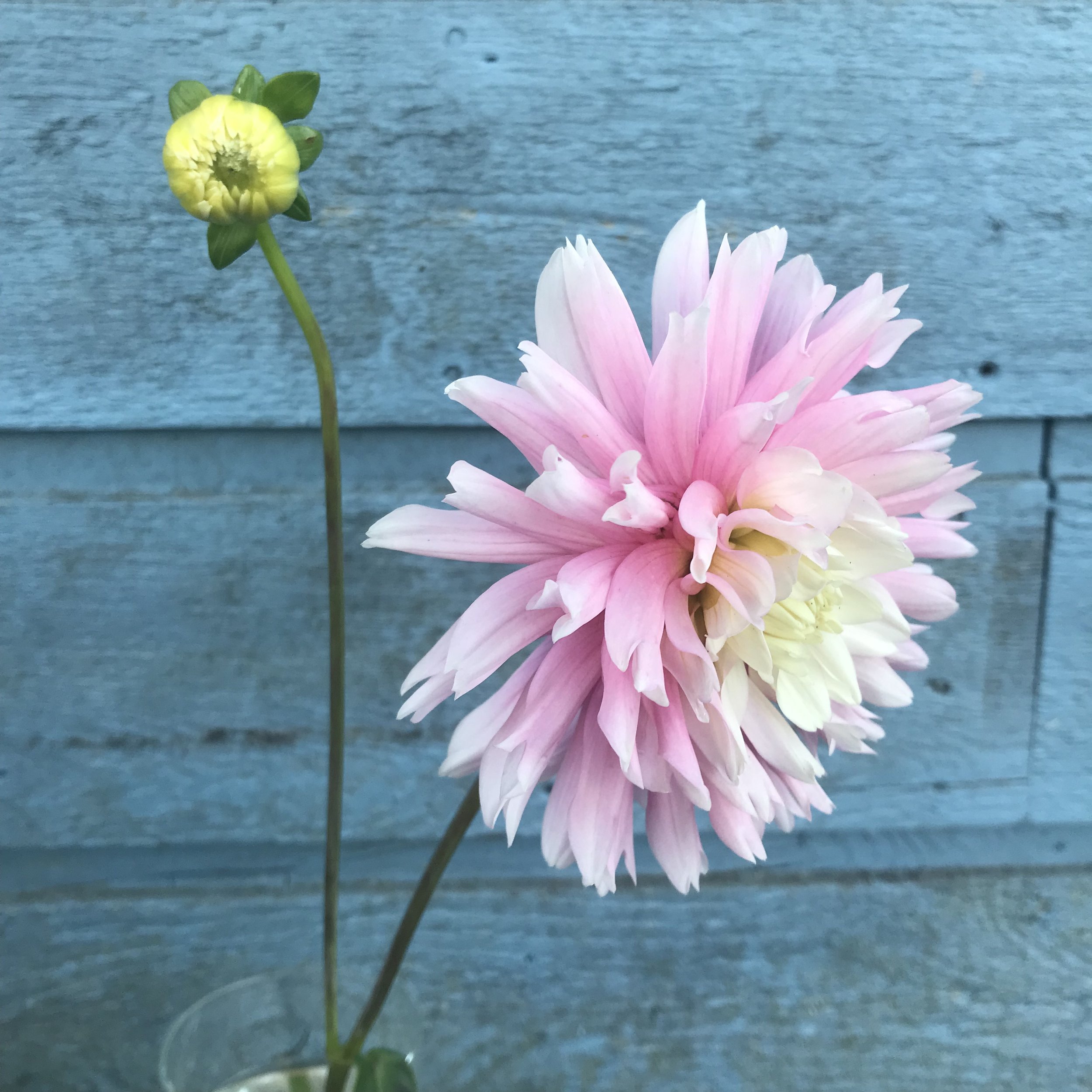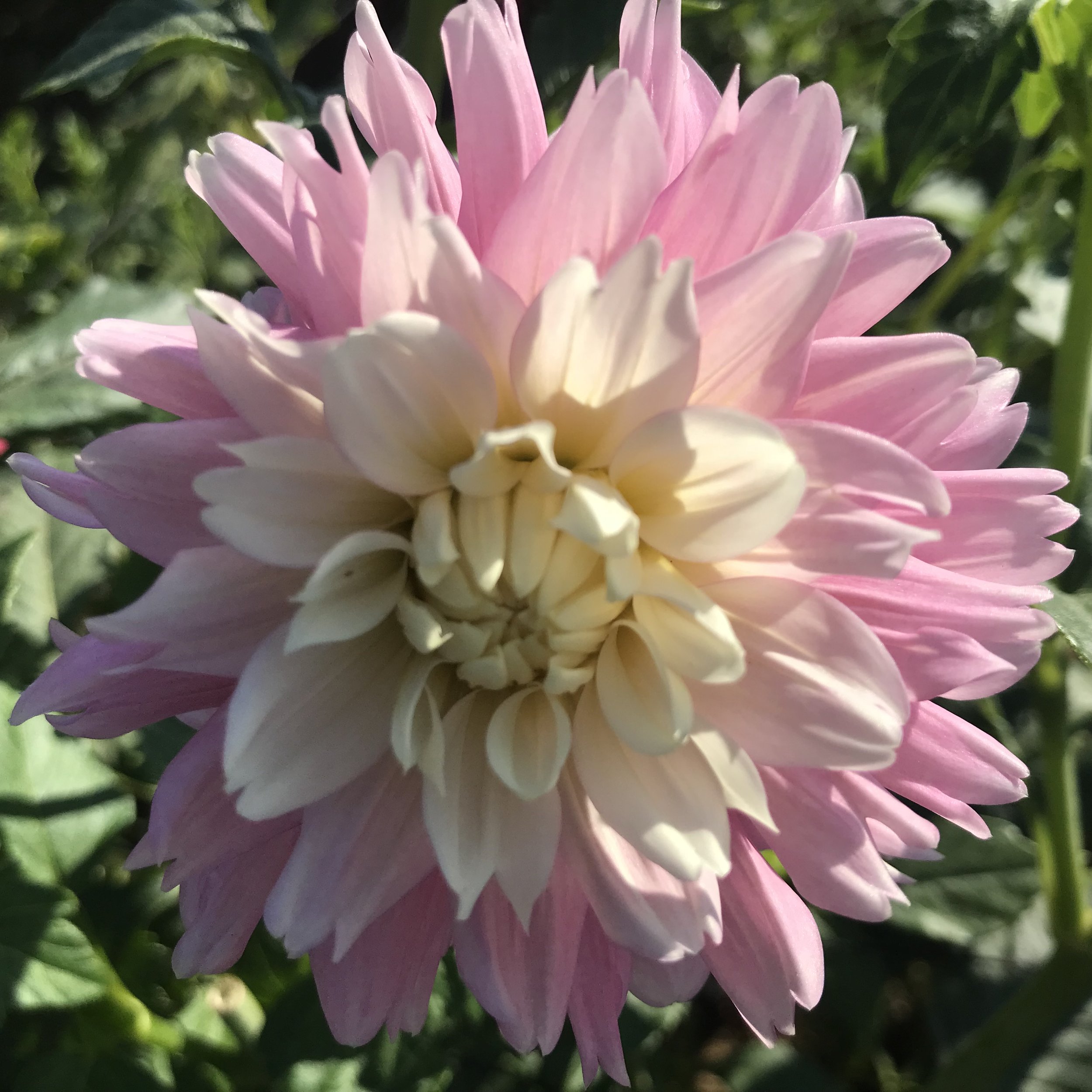 Image 1 of 3
Image 1 of 3

 Image 2 of 3
Image 2 of 3

 Image 3 of 3
Image 3 of 3




Chilson's Pride
ADS: 3110, BB, ID, LB
Height: 5’
Bloom: 4”, Informal Decorative
Notes: Chilson’s Pride features soft pink flowers with pale creamy centres that pump out the blooms all season long. Petal tips are slightly fringed providing extra texture. Introduced in 1954 by an American grower, Chilson’s Pride continues to be an exhibition show dahlia of note, winning 33 awards at Dahlia Society shows across North America in 2022, earning it recognition on the ‘Cream of the Crop’ list.
ADS: 3110, BB, ID, LB
Height: 5’
Bloom: 4”, Informal Decorative
Notes: Chilson’s Pride features soft pink flowers with pale creamy centres that pump out the blooms all season long. Petal tips are slightly fringed providing extra texture. Introduced in 1954 by an American grower, Chilson’s Pride continues to be an exhibition show dahlia of note, winning 33 awards at Dahlia Society shows across North America in 2022, earning it recognition on the ‘Cream of the Crop’ list.
ADS: 3110, BB, ID, LB
Height: 5’
Bloom: 4”, Informal Decorative
Notes: Chilson’s Pride features soft pink flowers with pale creamy centres that pump out the blooms all season long. Petal tips are slightly fringed providing extra texture. Introduced in 1954 by an American grower, Chilson’s Pride continues to be an exhibition show dahlia of note, winning 33 awards at Dahlia Society shows across North America in 2022, earning it recognition on the ‘Cream of the Crop’ list.
For best results, grow your dahlias in a sunny spot, with fertile, well-drained soil. Stake flowers for support and deadhead/ harvest blooms regularly. This will encourage the plant to keep producing flowers. Lift tubers after the first frost and store them in a cool, dry place where they won’t freeze. In March, they can be potted up and kept in a temperate greenhouse before planting out, or tubers can be planted directly into the garden after the risk of frost has passed. We plant directly into prepared beds, with a handful of organic fertilizer into each hole. Once planted, the tubers do not need water until shoots have emerged from the soil, as it can cause them to rot. Once they get growing, they will need regular watering, approximately every three days or more if the weather is hot.